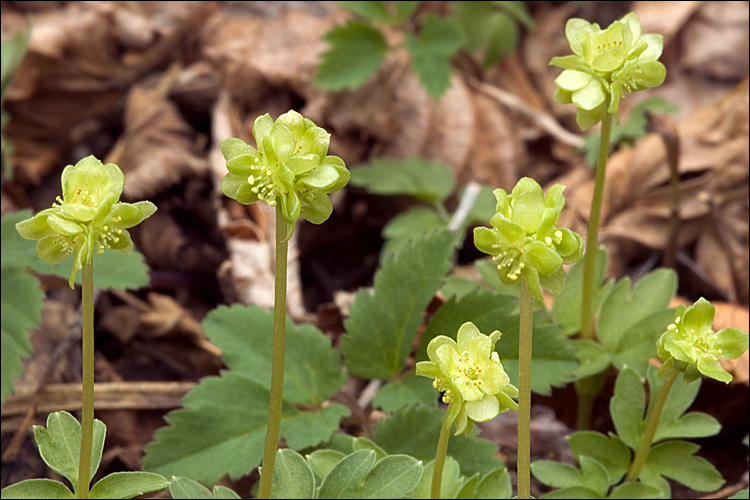
 |  |  |  |  |
 |  |
Moschatel is a perennial plant, 5-15 cm tall. Rhizome short, light, stolons are often formed, underground lateral shoots with undeveloped leaves. Inflorescence, as a rule, one, rarely several. Shoots erect, unbranched. Rhizome leaves (1-3) doubly trifoliate on petioles. Stem leaves (2) triple, arranged oppositely, on petioles. A bit shiny on the bottom, matte on top.
The small, bisexual flowers are located at the top of the stem, located in the inflorescence of the head. There are usually 5 flowers in one inflorescence. Central flower actinomorphic, four-parted. The flower is light green in color. The flowers contain nectar with a musky scent.
Fruits Moschatel - greenish drupes with 1-5 seeds, which are spread by fish and birds. The plant blooms in May and June. Pollinated with the help of insects, self-pollination is less common. The plant more often reproduces vegetatively, as with the help of seeds.
Only the roots of the Moschatel are harvested for medicinal purposes. They are collected in mid-September, rinsed thoroughly in running water and then dried in a well-ventilated and shaded place. Decoctions and infusions are made from the dried roots. Essential oils are also obtained from the roots of this plant through steam distillation.
Drug storage period - 1 year.
The roots of Moschatel contain 3% essential oils, organic acids and tannins. In addition, the plant also contains caffeic and p-coumaric acid, delta-lactones and iridoid glycoside.
Medicinal significance
From the pharmacological point of view, little is known about this plant, as it has practically not been studied.
On the other hand, in folk medicine, essential oil, root decoction and infusion are used. It is important to know that essential oil is not obtained in industrial quantities, the only way to get this oil is through steam distillation at home.
The essential oil of Moschatel has antispasmodic, antiseptic and wound-healing properties. It is used in baths and compresses. Before use, dilute 1-2 drops of essential oil with base oil, as concentrated essential oil can cause inflammation and even necrosis.
Root stock has antimicrobial properties. The poultice is used externally to treat furunculosis and wounds, but is used orally for measles and smallpox.
A decoction of the root of the Moschatel has a calming and strengthening effect on the body, it is usually used to reduce anxiety and improve the quality of sleep.